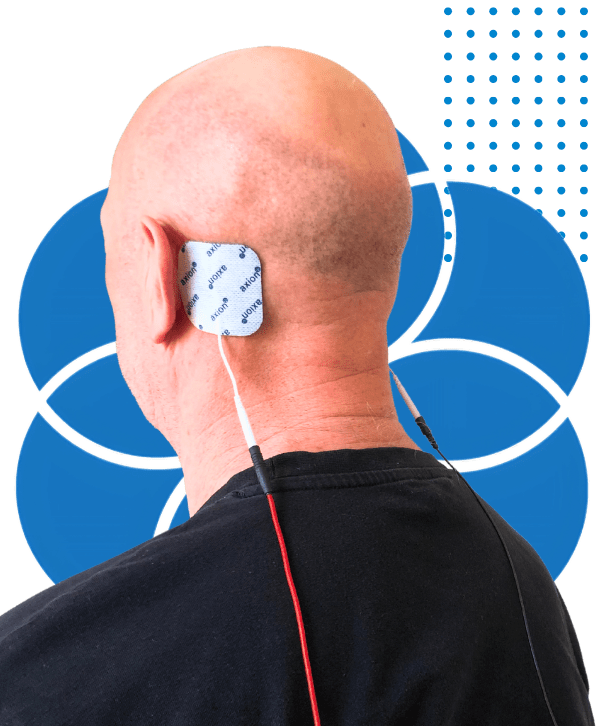Transcranial Direct Current Stimulation (tDCs)
A detailed overview
tDCs is a well-established technique involves the application of weak electric currents (typically between 1mA – 2mA) to the parts of the scalp that overlie target brain areas. These currents change how the underlying neurons behave and can help restore function.
The procedure is approved by the National Institute for Health and Care Excellence (NICE) for the treatment of depression (see https://www.nice.org.uk/guidance/IPG530)
The use of tDCs in the treatment of anxiety, pain, and motor and non-motor (i.e. cognitive) symptoms after stroke or other forms of brain injury is not yet endorsed by NICE and is instead based on detailed evidence drawn from peer-reviewed, published scientific investigations. Many of these publications can be found online and we can guide you to relevant papers if helpful.

The electrical signals used in tDCs are generated by a small, battery powered unit and flow through wires to two small electrodes attached to the head. The electrodes are carefully positioned to ensure that they sit above the areas of brain that need to be targeted.
tDCs is considered to be a low risk procedure. However, some people do report temporary side effects such as skin redness, itching and tingling at the electrode site. Others might feel nauseous, headache or dizziness although again these side-effects should pass quickly. A member of our therapy team will talk to you about these possible side-effects.
Research paper for further reading: https://www.nice.org.uk/guidance/IPG530
For a full list of Prof. Wilkinson’s published studies please see here: https://www.kent.ac.uk/school-of-psychology/people/253/wilkinson-david
For a general overview of non-invasive neurostimulation, written by Prof. Wilkinson & Dr. Bodani, please see https://kar.kent.ac.uk/59334/1/265801595.pdf